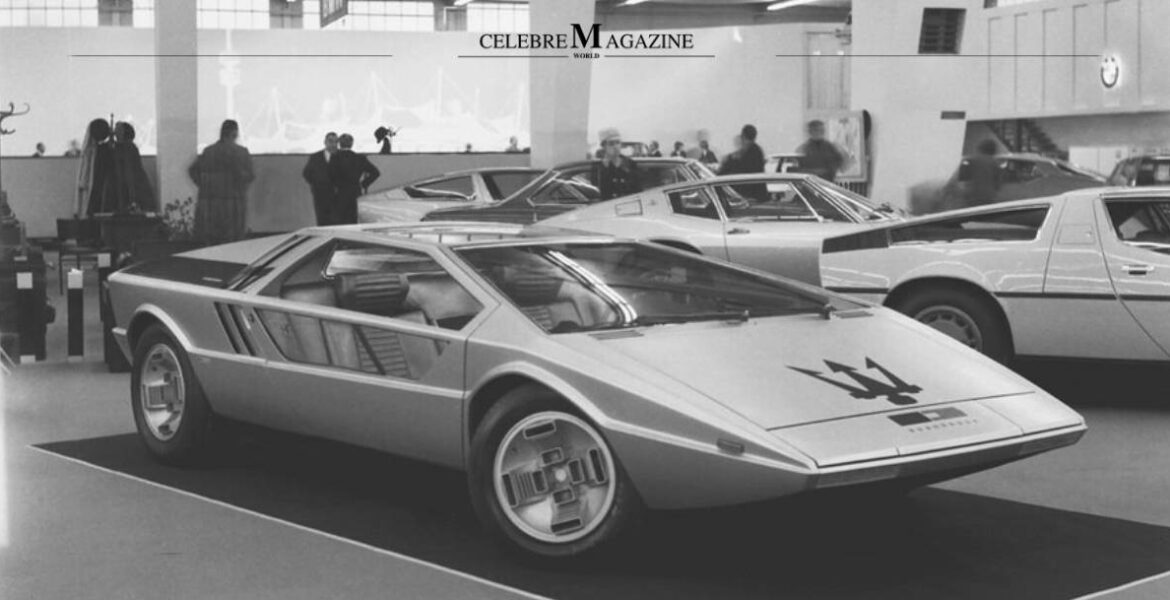It was the 1970s, and the world of car design was undergoing a revolution. Abandoned soft, flowing lines and bold geometries made of smooth surfaces and taut lines were explored. Maserati was already an established brand in the world. Its racing cars and GTs were a sign of elegance and sportiness. Giorgetto Giugiaro and Aldo Mantovani are looking for visibility to grow their young company: Italdesign, founded in 1968.

Giugiaro’s talent exploded, first at “Carrozzeria Bertone” with splendid production cars and dream concept cars including the Testudo and the Canguro and then at Ghia with the Mangusta and the Ghibli, and again with his Italdesign where the Manta, the Iguana and the Tapiro have already captured the attention. At Italdesign, studies began on creating an unconventional coupé, both in terms of styling and technical solutions, to be presented at the 1972 Turin motor show. The result is spectacular and is called: Maserati Boomerang. A happy hand that makes a difference with its pencil.

In side view, the car has a steeply raked windscreen, a single line with the front bonnet, on which there is a blue Maserati trident graphic. The very low headlining lets the pillars fall steeply towards the tail, with two slight, elegant spoilers perfectly integrated into the styling of the rear volume, which also acts as heat sinks. On the side, there is double glazing with one part above the beltline and can open one position below that for ventilation of the passenger compartment. Two small air intakes with a blue graphic and the initials “77” stylised GGs underline Giorgetto Giugiaro’s signature.

The entire volume is shaped like a prism, with the pillars strongly inclined towards the roof’s upper part and folded surfaces towards the under doors. A horizontal line runs along the perimeter, clearly dividing the car into two volumes like a diamond. The rear area with ultra-modern, wide headlights and four quadrangular exhausts integrated into the bodywork. The splendid alloy wheels with four raised rectangular holes descending towards the concave central area.

A protruding cover overhangs the engine bonnet, under which hides the Ghibli’s mighty 8-cylinder engine with 4.7 litres of cubic capacity capable of developing 310 hp and propelling the prototype to a speed of 300 km/h. The seats are practically floor-level, designed like chaise longues connected to the floor, surrounded by small door panels with a vertically ribbed design. But if the exterior is extreme, the interior leaves no room for banality. The steering wheel integrates all the instrumentation inside. In fact, the crown is hinged in the prominent eyelid, which emerges from a horizontally developed dashboard. The very elegant tunnel with the very short gear lever and the rotors for the adjustments.

Presented in the static form at the 1972 Turin motor show, the Boomerang broke the mould by changing the paradigms of car design. After five months, the car was shown at the 1973 Geneva Motor Show, with some minor refinements to the instrumentation and central tunnel controls, dictated more by practical than stylistic requirements. The Maserati Boomerang remained an exercise in style and inspired other cars that Giugiaro would produce years later. In 1974, the car was sold to a private owner. Over the years, it changed hands again and was displayed at the most fabulous “Concours d’Elegance” until auctioned in 2015 at 3,335,000 euros.

It is a concept car as simple and ingenious as all the cars designed by Giorgetto Giugiaro, absolutely Maserati in its way of being and in its never ostentatious elegance. After almost half a century, we are still talking about it because works of art are timeless, and the Boomerang will remain so for a long time to come.

Article by Antonio Erario

